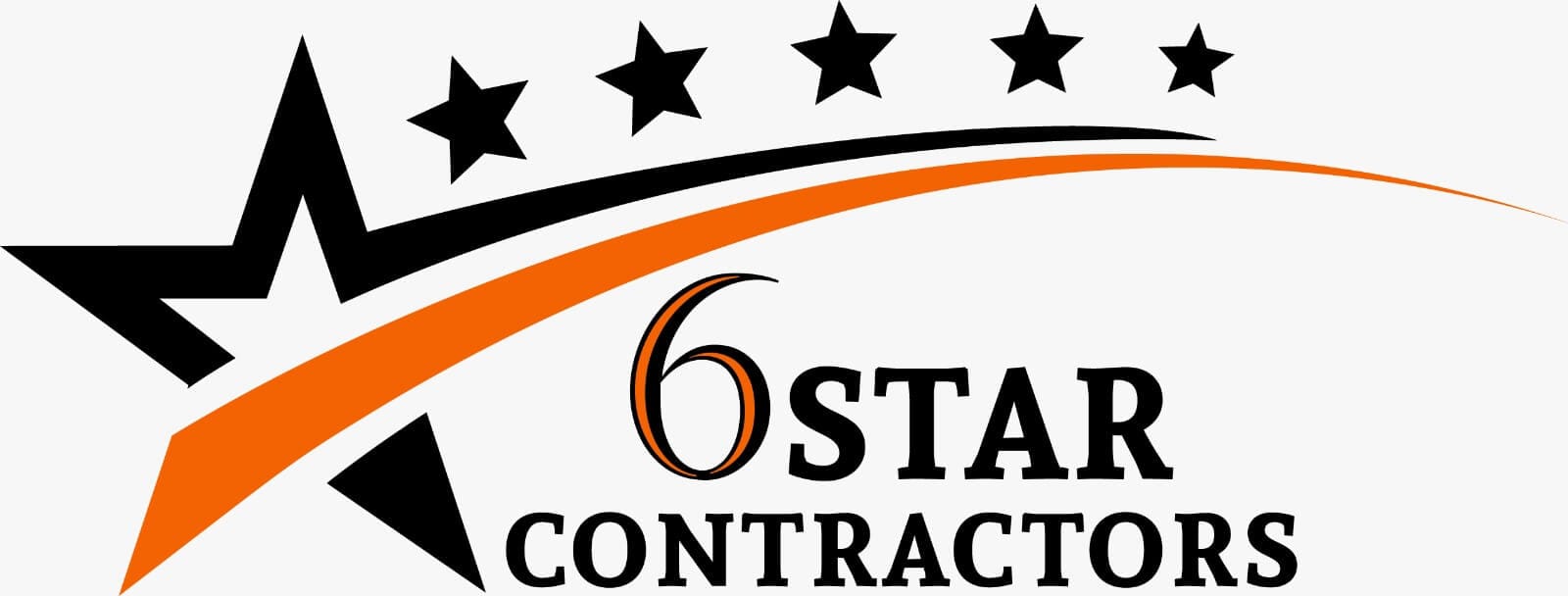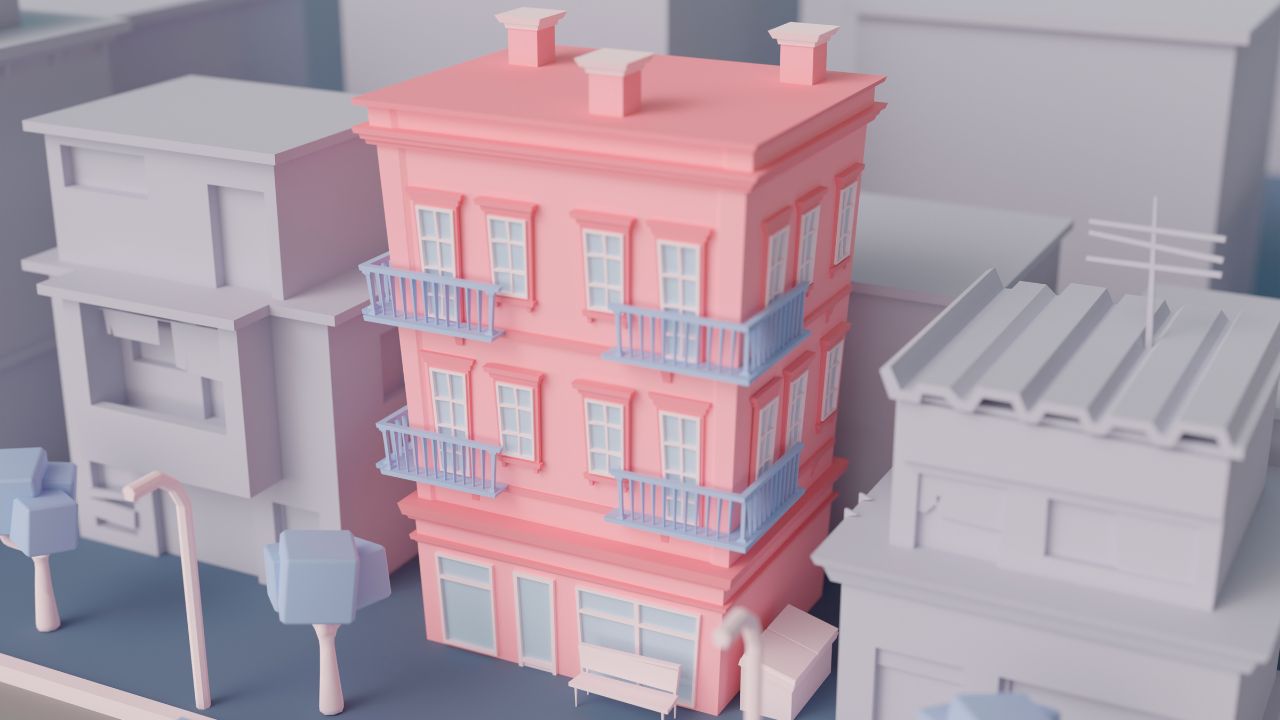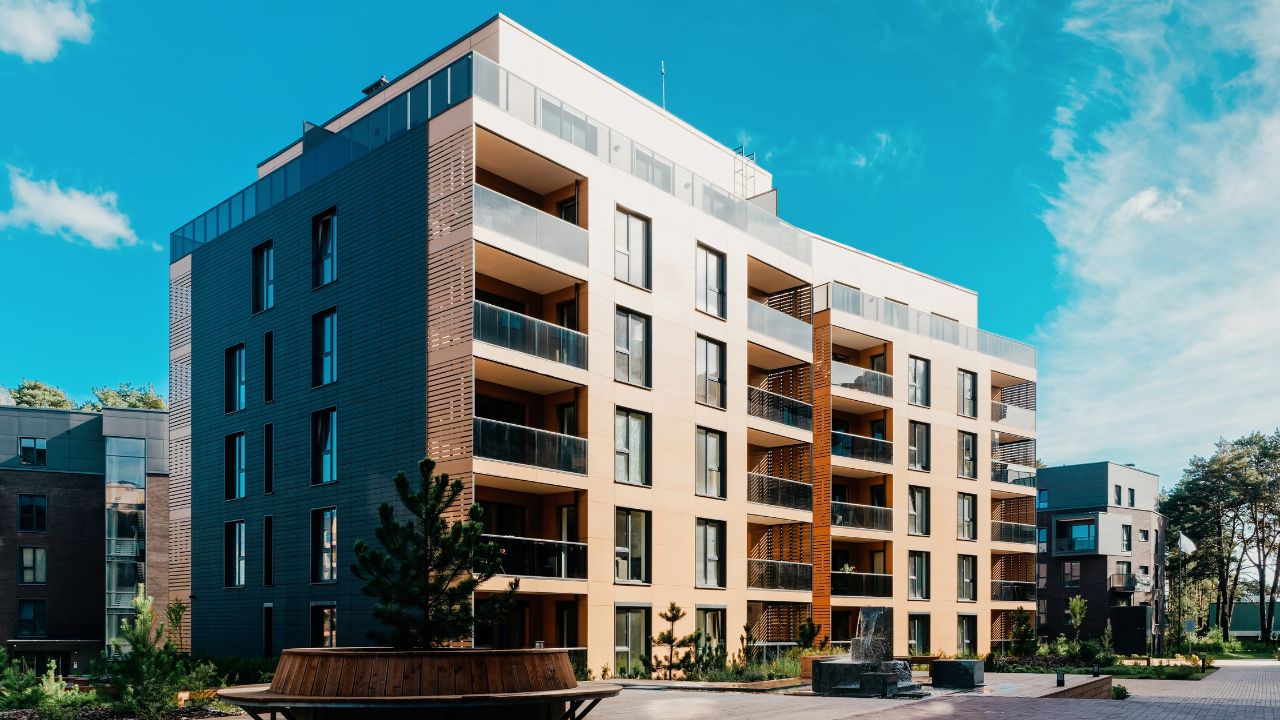Commercial Painting Cost Per Square Foot
In the highly competitive world of commercial real estate, the exterior appearance of your building is your first chance to make a lasting impression. A fresh coat of paint can be a cost-effective way to revitalize your commercial property and significantly enhance your business’s image. However, before embarking on this transformative journey, it’s crucial to grasp the intricacies of the costs involved. On average, commercial painters charge about $4 to $12 per square foot and approximately $80 to $150 per hour for their services.
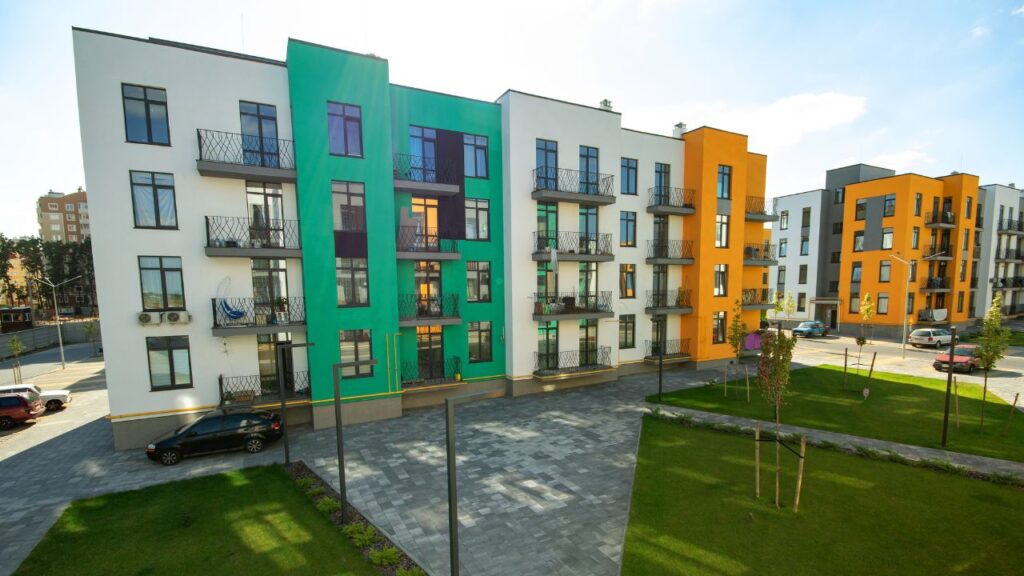
This article aims to provide a comprehensive insight into the factors that influence these costs, ensuring you have a crystal-clear understanding of what to anticipate when planning a commercial painting project.
Factors Affecting Commercial Painting Costs
Size of the Building (Square Footage)
The size of your commercial building is, without a doubt, the most significant determinant of painting costs. The larger the building, the more paint and labor will be required, consequently increasing the overall expense. Smaller structures, on the other hand, typically cost less to paint. To get a precise estimate, it’s essential to calculate the total square footage of all surfaces to be painted, including walls, ceilings, and trim. This careful measurement is the cornerstone of an accurate cost projection.
Are You Looking For?
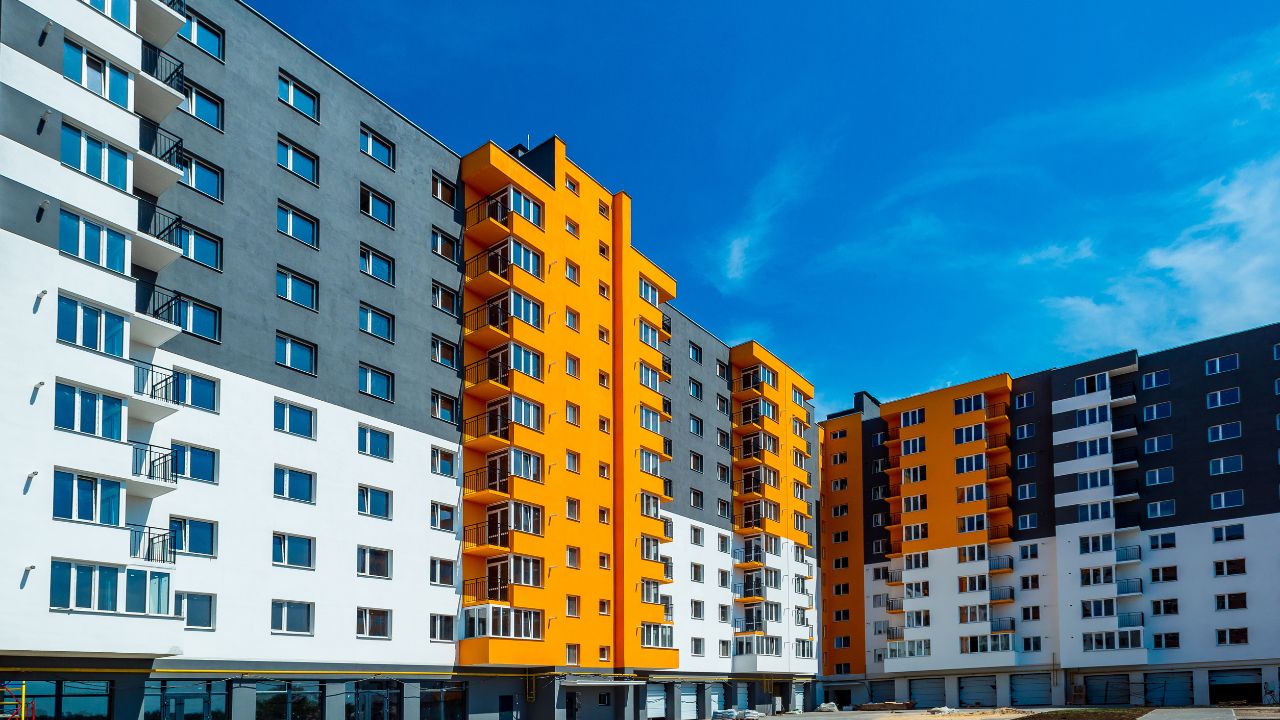
Fully Insured
Licensed Hire a Contractor For Painting
Labor Costs
The expertise and efficiency of the painters you hire significantly influence labor costs. Highly experienced professionals may command higher hourly rates, but their work is likely to be of superior quality. Labor costs can typically range from $30 to $50 per hour, but these figures can vary based on location and the complexity of the project. Seasoned painters are more likely to complete the job efficiently, potentially saving you money in the long run. When evaluating labor costs, also consider factors like the number of painters required and the expected project duration.
Materials and Paint Quality
The type and quality of paint you choose directly impact your expenses. High-quality paints often come with a higher price tag, but they offer better durability and longevity. It’s essential to select a paint that aligns with the specific needs of your building and the environmental conditions it faces. Investing in top-tier paint can lead to reduced maintenance costs and extend the lifespan of your paint job. Consider factors such as the paint’s resistance to weather, UV rays, and the level of maintenance it will require over time.
Surface Preparation
Proper surface preparation is a cornerstone of a lasting and professional paint job. If your building’s surfaces require extensive prep work, such as scraping, sanding, or repairs, this will increase both labor and material costs. The condition of the existing surfaces will play a pivotal role in determining the extent of preparation needed. Be sure to assess factors like the presence of peeling paint, cracks, or water damage, as these will necessitate more extensive and time-consuming preparations.
Access to the Building
The accessibility of your building is another factor that can influence the cost. For high-rise structures and buildings with challenging access points, specialized equipment like scaffolding or cherry pickers may be necessary. These additional tools and safety measures can contribute to the overall cost. Buildings with straightforward access will generally have lower expenses in this regard. When evaluating access, consider the safety of the painters and the equipment required for the job.
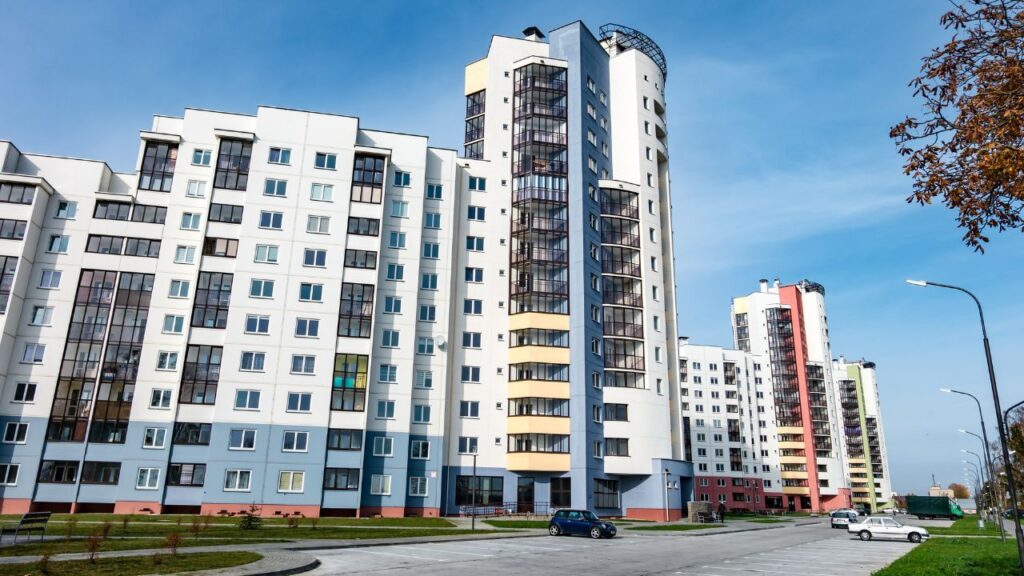
Number of Colors and Details
The intricacy of the design and the number of colors used in the project will impact both labor and material costs. A single color with a straightforward design is more cost-effective compared to intricate designs with multiple colors. Intricate details demand more time and precision, thus increasing expenses. When choosing a color scheme, contemplate factors like branding and aesthetics, but also budget constraints. Keep in mind that additional colors and intricate designs may require more frequent touch-ups and maintenance over time.
Location
The geographical location of your commercial property can have a significant influence on costs. Urban areas tend to have higher labor and material prices compared to rural locations. It’s essential to consider the local market and regional cost variations when budgeting for your painting project. Additionally, urban areas may have parking and logistical challenges, which can impact the ease of setting up and completing the project.
Permits and Regulations
Certain commercial painting projects may require permits or must adhere to specific regulations, depending on your location. These additional administrative requirements can affect the overall cost. It’s crucial to ensure that you have the necessary permits in place to avoid any legal complications. The costs associated with permits can vary widely, so research local requirements thoroughly.
Environmental Considerations
Environmental factors, such as weather conditions, can influence painting costs. Inclement weather may lead to project delays, while extreme temperatures can affect the quality of the paint application. To avoid weather-related issues, it’s essential to plan your painting project during seasons with stable and moderate weather conditions. Proper planning, which may include scheduling the project during the optimal weather conditions, can minimize potential delays and ensure the longevity of the paint job.
Commercial Painting Estimator
Our estimates are highly accurate and well managed. You can increase your bid-winning ratio with our commercial painting cost estimating services.
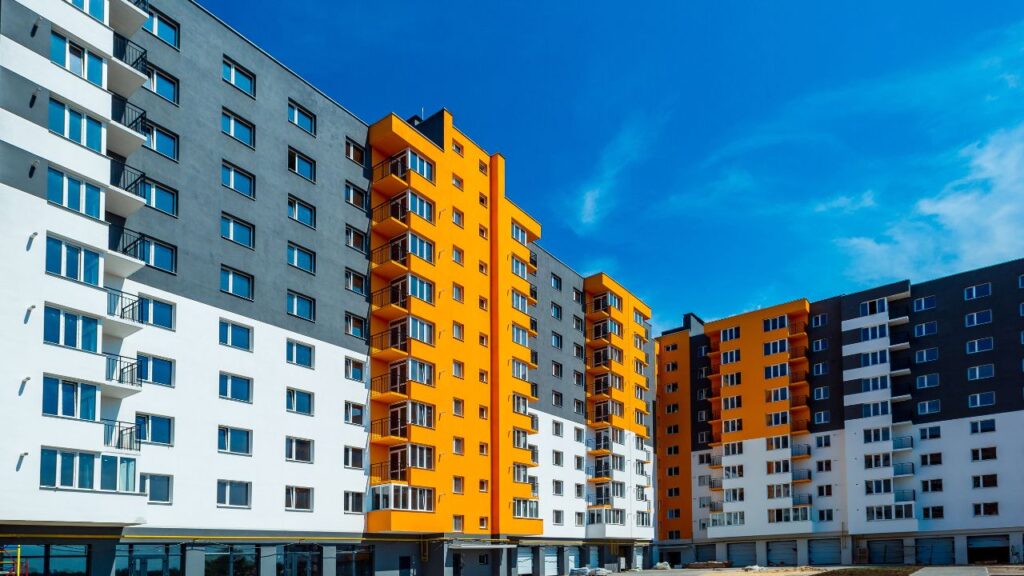
Add-Ons and Extra Services
Additional services like pressure washing, graffiti removal, or the application of specialty coatings can contribute to the total cost. While these services can enhance the durability and appearance of the paint job, they should be factored into the budget. Specialized services often require experienced professionals, which can impact labor costs. Additionally, the cost of materials for services like graffiti removal or specialty coatings can vary significantly.
The Cost Breakdown
Let’s delve deeper into the cost breakdown, using a hypothetical example to illustrate the expenses associated with commercial painting. Suppose you have a 10,000 square foot commercial building with a single color, located in a moderately-priced area. Here’s a more detailed estimate of the cost:
- Size of Building: The building’s total square footage is 10,000 square feet, encompassing all surfaces to be painted, including walls, ceilings, and trim. To ensure accuracy, break down the square footage by surface type (walls, ceilings, trim) and consider any additional details or architectural features that require paint.
- Labor Costs: Labor costs range from $30 to $50 per hour, depending on the expertise of the painters and the complexity of the project. Calculate the estimated number of labor hours required for your project based on the size of the building, surface preparation, and details. This will provide a more accurate labor cost projection.
- Materials and Paint Quality: Selecting mid-range paint at $30 per gallon ensures a good balance between cost and quality. The total quantity of paint needed is determined based on the square footage and the recommended paint coverage. Factor in additional materials, such as primers or sealants, and consider any waste during the application process.
- Surface Preparation: The cost of surface preparation depends on the extent of work required, including cleaning, patching, and repairs.
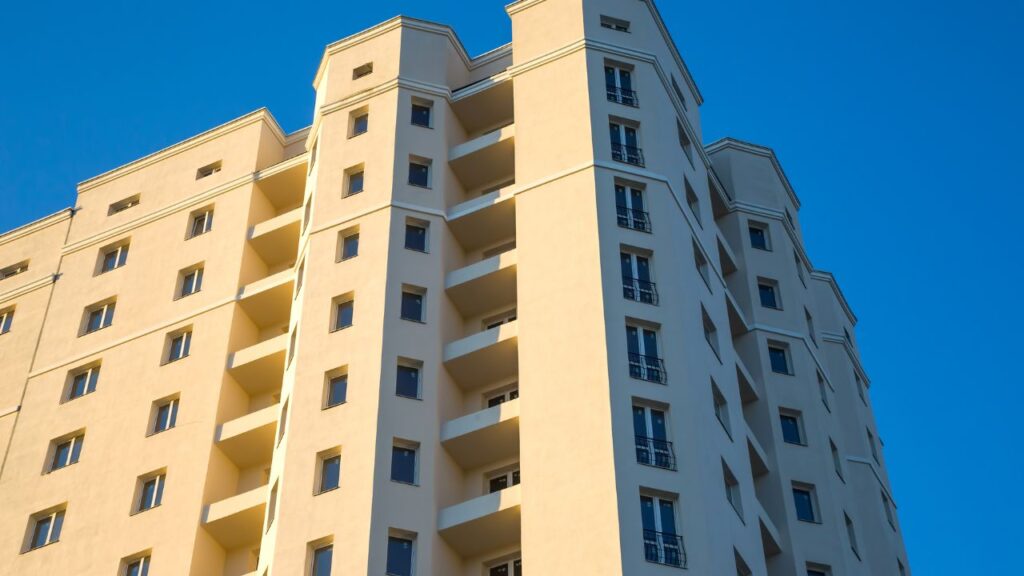
Evaluate the condition of all surfaces to be painted and list the specific preparation tasks, along with the materials required for each. This detailed breakdown will provide a more accurate preparation cost estimate.
- Access to the Building: Assess the accessibility of the building. Standard access may require minimal specialized equipment, while buildings with challenging access points may need additional tools like scaffolding. Consider the type of equipment needed and the duration of use to estimate the equipment cost accurately.
- Number of Colors and Details: If your project involves intricate designs with multiple colors, it will require more labor and materials compared to a project with a single color and a straightforward design. Break down the design into specific color sections and details to estimate paint and labor costs accurately.
- Location: Consider the geographical location of your commercial property. Urban areas often have higher labor and material costs compared to rural locations. Regional cost variations should be factored into the budget. Additionally, urban areas may have parking and logistical challenges, which can impact the ease of setting up and completing the project.
- Permits and Regulations: Identify whether your project requires permits or must adhere to specific regulations. The costs associated with obtaining permits and complying with regulations should be accounted for in the budget. Research local permit costs and compliance requirements to ensure accuracy.
- Environmental Considerations: Depending on the climate and weather conditions, it’s crucial to anticipate potential weather-related delays and plan accordingly. Consider the impact of weather on project duration, as well as any protective measures or equipment required for adverse weather conditions.
- Add-Ons and Extra Services: Determine if your project requires additional services like pressure washing, graffiti removal, or specialty coatings. These services enhance the durability and appearance of the paint job but come with their respective costs. Provide detailed descriptions of each additional service and the associated materials and labor costs.
Are You Looking For?

Make Informed Design Decisions Showcase Your Design Ideas
Get RenderingEstimated Cost:
- Labor Costs: Calculate the total hours required for the project and multiply it by the chosen labor rate to determine the labor cost. Consider any overtime, specialized labor rates, or additional labor costs for specific tasks.
- Materials: Estimate the number of gallons of paint needed based on the total square footage to be painted. Multiply the quantity by the selected paint price per gallon. Include the cost of any additional materials such as primers, sealants, or specialized coatings.
- Surface Preparation: The cost of surface preparation depends on the extent of work required, including cleaning, patching, and repairs. List each specific task, along with the materials needed, and calculate the preparation cost accordingly.
- Total Cost: Add up the labor costs, material costs, surface preparation costs, equipment costs, permit costs, and any other project-specific expenses to arrive at the total cost of your commercial painting project. Provide a detailed breakdown of the total cost, including the cost of each component.
It’s important to note that this is a rough estimate, and actual costs may vary depending on your unique project requirements, the condition of your building, and the specific conditions of your commercial property.
Conclusion
Investing in commercial painting can significantly enhance your building’s aesthetic appeal, boost your business’s image, and ultimately attract more customers. It’s crucial to understand the various factors that influence the cost per square foot, as this knowledge will empower you to make informed decisions when planning your painting project. By carefully considering the size of your building, labor costs, the quality of materials, surface preparation, and other relevant factors, you can budget effectively and ensure the success of your commercial painting endeavor.
Frequently Asked Questions
To lower painting costs, consider choosing cost-effective paint options, obtaining multiple quotes from painters to find competitive rates, and invest in proper building maintenance to extend the life of the paint job. Additionally, explore potential cost-saving measures for labor, such as using apprentices or off-peak scheduling.
While DIY painting is an option, hiring professionals is advisable to ensure a high-quality, long-lasting result. Professional painters have the expertise and tools to deliver exceptional outcomes, which can save you money and hassle in the long term. Their experience can also lead to more efficient and precise work, reducing the need for frequent touch-ups and maintenance.
High-quality paint offers superior durability, longer-lasting results, and a more polished appearance. This reduces the need for frequent repaints, saving you money and time in the long run. It also provides better protection against weather elements and environmental factors, preserving the structural integrity of your building.
Yes, eco-friendly paints with lower levels of volatile organic compounds (VOCs) are available. These paints are better for the environment and can create a healthier indoor atmosphere. Using environmentally-friendly paint can also align with sustainability goals and appeal to environmentally-conscious customers.
The frequency of repainting depends on various factors, including location, weather conditions, and the quality of the previous paint job. On average, commercial buildings are repainted every 5 to 10 years. Proper maintenance, such as regular inspections and touch-ups, can help extend the time between full repaints, ultimately reducing long-term costs.
Process To Get Commercial Painting Cost Estimate Report
Here I am going to share some steps to get a commercial painting cost estimate report.
-
You need to send your plan to us.
You can send us your plan on info@estimatorflorida.com
-
You receive a quote for your project.
Before starting your project, we send you a quote for your service. That quote will have detailed information about your project. Here you will get information about the size, difficulty, complexity and bid date when determining pricing.
-
Get Estimate Report
We do commercial painting cost estimating and prepare a detailed report for your project. At last you finalize the report and finish the project.
Google Reviews


